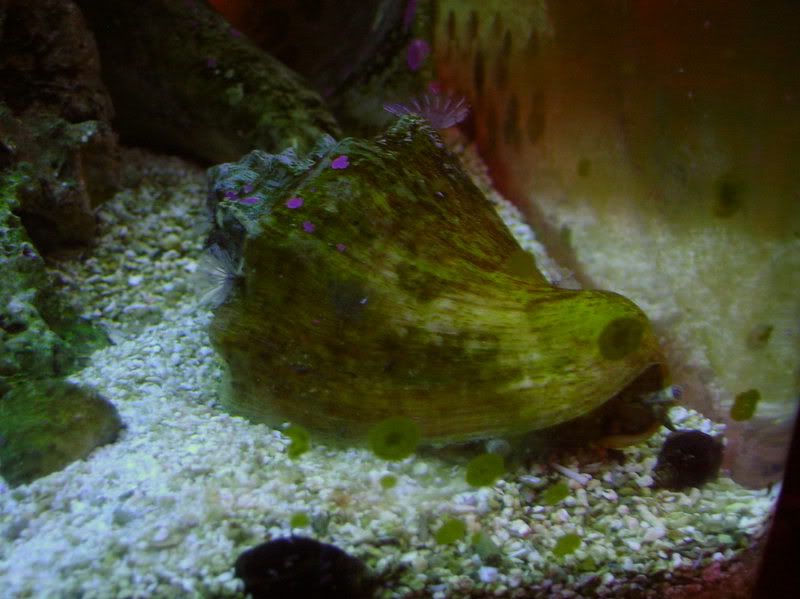tomato clown
Member
I was at the LFS today and picked up this nice little conch along with my turbo snails. I didn't see much info about conch's here so I figured I'd ask as well.
Jumping the gun on conch's.. no I've done reading and such and wanted one for a long time, they are just "technically" not allowed in Florida to come from the ocean (harvested). So for the $10.00 I snatched it up. From what I've read and been told we aren't allowed to have/own them here unless they are tank raised. The LFS guy said this was so That was good enough for me to hear to grab it.
Now please correct me if I'm wrong, but is this not a Queen Conch? I know it's not a fighting conch or a helmet conch. I'm just looking for other possibilities and some advice on the upkeep.
As well if ya want to use the pic for the ID section, feel free.


Jumping the gun on conch's.. no I've done reading and such and wanted one for a long time, they are just "technically" not allowed in Florida to come from the ocean (harvested). So for the $10.00 I snatched it up. From what I've read and been told we aren't allowed to have/own them here unless they are tank raised. The LFS guy said this was so That was good enough for me to hear to grab it.
Now please correct me if I'm wrong, but is this not a Queen Conch? I know it's not a fighting conch or a helmet conch. I'm just looking for other possibilities and some advice on the upkeep.
As well if ya want to use the pic for the ID section, feel free.








